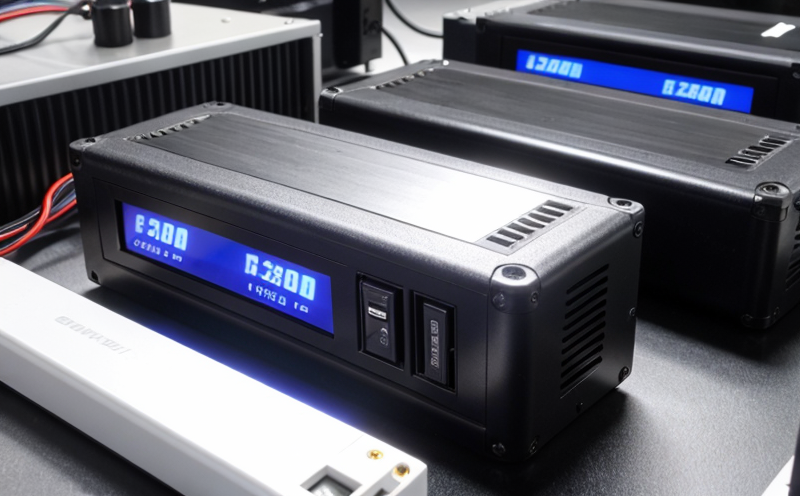DIN EN 62620 Lithium Secondary Large Cell Performance Testing
The DIN EN 62620 standard provides a comprehensive framework for testing the performance of large lithium secondary cells. This standard is particularly important in sectors like automotive, energy storage, and aerospace where the safety and reliability of battery cells are critical.
Under this standard, various tests are conducted to evaluate parameters such as capacity retention, internal resistance, temperature cycling, and calendar life. The testing process ensures that these batteries meet stringent performance criteria before they are deployed in real-world applications. This is especially crucial for large cell batteries where any failure can lead to significant safety hazards.
The testing procedure involves rigorous characterization of the battery’s behavior under different environmental conditions. These tests simulate real-life scenarios, ensuring that the cells perform reliably across a wide range of temperatures and loads. The results are then used by manufacturers to optimize their products and ensure compliance with international regulations.
One of the key aspects of this testing is the evaluation of safety features such as overcurrent protection and thermal management systems. These tests help in identifying potential weaknesses early on, allowing for timely corrective actions. Additionally, the standard covers durability assessments which are vital for assessing the lifespan of these batteries under continuous operation.
The testing process also involves detailed characterization of the battery’s electrical parameters including voltage profiles during charging and discharging cycles. This data is invaluable for understanding how the cells behave over time and under varying conditions. It helps in predicting future performance and identifying any signs of degradation early on.
For large lithium secondary cells, specific considerations are made regarding their size and power density which can significantly impact test procedures. The standard provides guidelines tailored to these unique characteristics ensuring accurate and reliable results.
The importance of this testing cannot be overstated as it ensures that batteries meet not only regulatory requirements but also the expectations set by consumers and industry standards. By adhering strictly to DIN EN 62620, manufacturers can build confidence in their products while minimizing risks associated with poor quality or non-compliant components.
Compliance with this standard is essential for companies operating within these sectors as it enhances brand reputation and market competitiveness. It also helps in securing contracts from reputable clients who demand stringent quality assurance measures.
Applied Standards
| Standard Number | Title | Description |
|---|---|---|
| DIN EN 62620 | Lithium secondary batteries – Performance requirements and test methods for large cells (≥1Ah) | Describes the performance requirements, test methods, and procedures applicable to lithium secondary large cells. |
Customer Impact and Satisfaction
The rigorous testing conducted according to DIN EN 62620 ensures that customers receive batteries that are not only safe but also perform optimally under various conditions. This enhances customer satisfaction as it reduces the risk of product failures leading to costly downtime or safety hazards.
By ensuring compliance with this standard, suppliers can demonstrate their commitment to quality and reliability which is highly valued by clients in competitive markets. It also provides peace of mind knowing that the products meet stringent international standards thereby increasing brand loyalty.
The detailed insights provided through thorough testing allow customers to make informed decisions about purchasing batteries that will meet their specific needs. This level of transparency builds trust between suppliers and buyers fostering long-term relationships based on mutual respect and understanding.
Environmental and Sustainability Contributions
The testing process outlined in DIN EN 62620 plays a crucial role in promoting environmental sustainability by ensuring that batteries are designed, manufactured, and used efficiently. By identifying potential issues early on through comprehensive performance evaluations, manufacturers can implement design changes aimed at reducing energy consumption and waste generation throughout the battery lifecycle.
Furthermore, adherence to this standard helps companies comply with global regulations concerning end-of-life disposal of batteries which is becoming increasingly important as demand for rechargeable technologies grows. Proper management of these materials contributes positively towards minimizing environmental impact associated with improper recycling practices.
The focus on durability and efficiency also aligns well with broader sustainability goals by extending the useful life span of products thus reducing overall resource depletion. This approach supports sustainable development initiatives both locally and internationally enhancing corporate social responsibility efforts.





